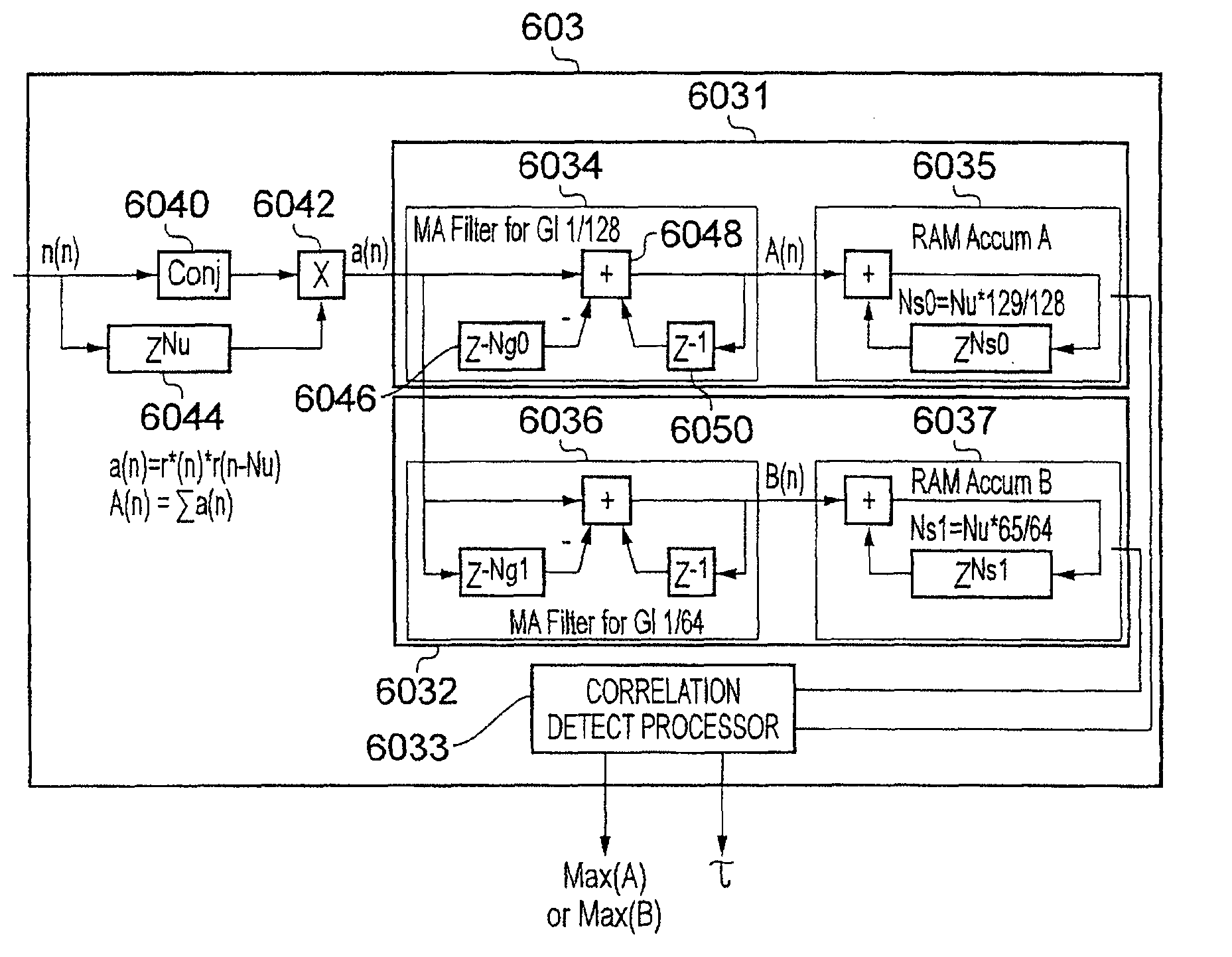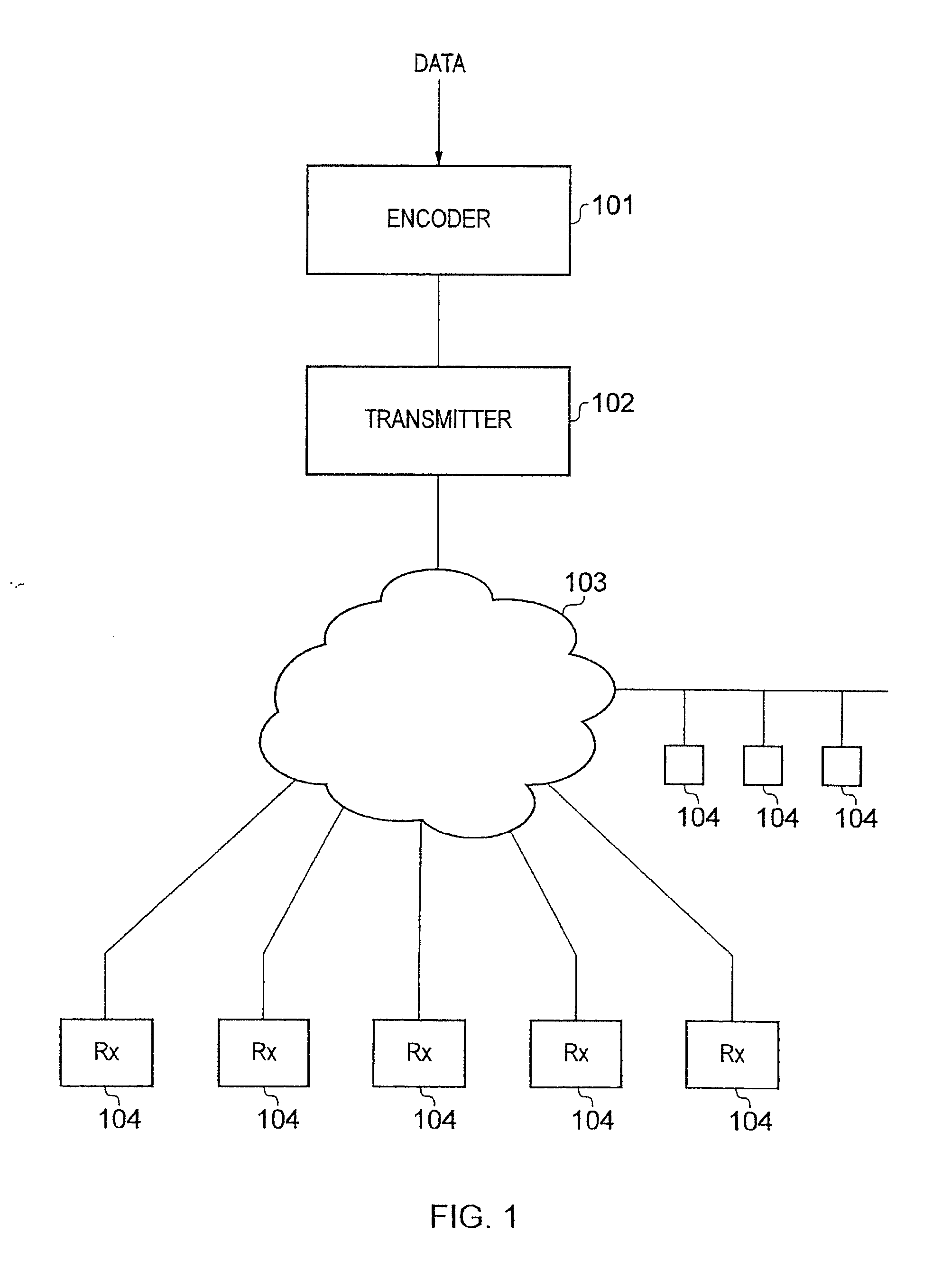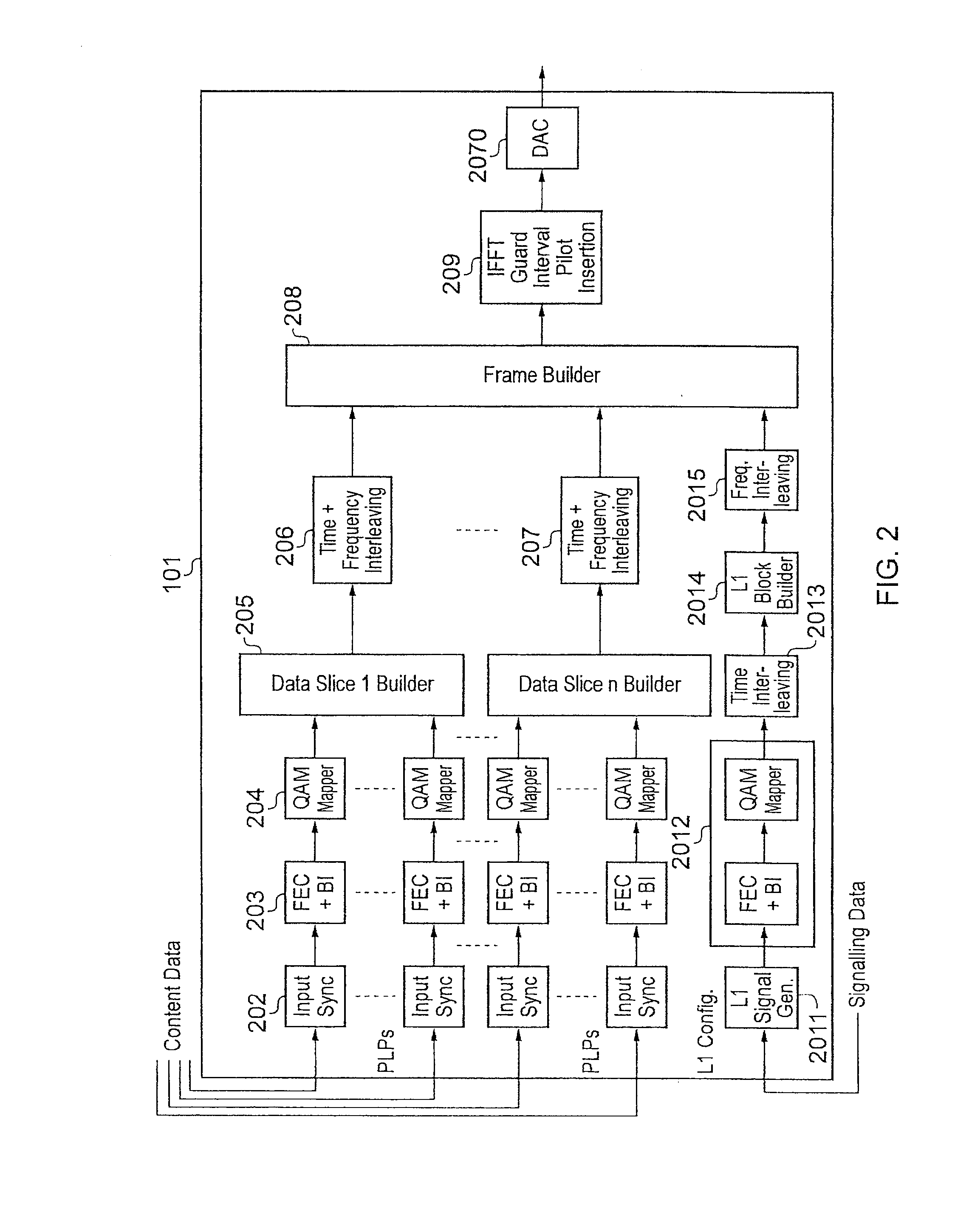Receiver and method
a receiver and receiver technology, applied in the field of receivers and methods, can solve the problems that the recovery of data from the useful part of the ofdm symbols at the receiver can nevertheless present a technical problem, and achieve the effect of improving the integrity of the receiver, speeding up the identification process, and improving the accuracy of the identification process
- Summary
- Abstract
- Description
- Claims
- Application Information
AI Technical Summary
Benefits of technology
Problems solved by technology
Method used
Image
Examples
Embodiment Construction
[0030]Example embodiments of the present invention are described in the following paragraphs with reference to a receiver operating in accordance with the DVB-C2 standard, although it will be appreciated that embodiments of the present invention find application with other DVB standards and indeed other communications systems which utilise Orthogonal Frequency Division Multiplex (OFDM).
OFDM Data Transmission
[0031]OFDM systems transmit data simultaneously on a series of orthogonal frequency sub-carriers. The frequency sub-carriers transmitted over a period of time make up a series of OFDM symbols.
[0032]In order to reduce the effects of multi-path propagation and other effects, each OFDM symbol typically includes a guard interval. A guard interval is a portion of each OFDM symbol in the time domain that is copied from one end of the OFDM symbol and inserted at the other. Therefore the total duration of an OFDM symbol will be T=Tg+Tu, where Tg is the guard interval duration and Tu is t...
PUM
 Login to View More
Login to View More Abstract
Description
Claims
Application Information
 Login to View More
Login to View More - R&D
- Intellectual Property
- Life Sciences
- Materials
- Tech Scout
- Unparalleled Data Quality
- Higher Quality Content
- 60% Fewer Hallucinations
Browse by: Latest US Patents, China's latest patents, Technical Efficacy Thesaurus, Application Domain, Technology Topic, Popular Technical Reports.
© 2025 PatSnap. All rights reserved.Legal|Privacy policy|Modern Slavery Act Transparency Statement|Sitemap|About US| Contact US: help@patsnap.com



